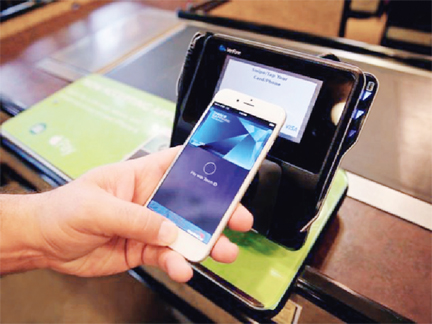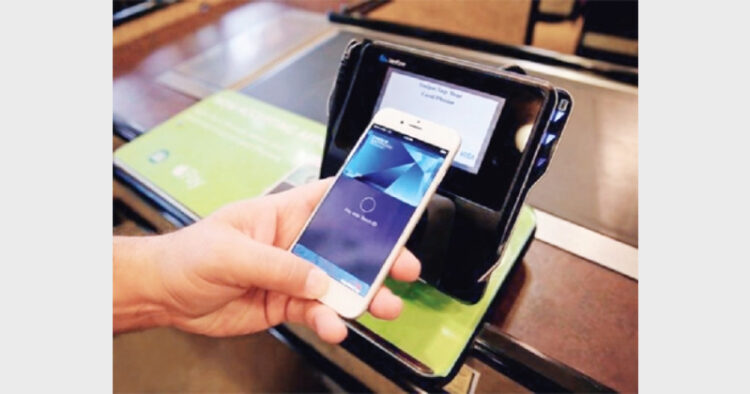 With the advent of Unified Payment Interface (UPI) in Indian banking sector, India is poised to make the best bet for making our economy cashless, a beginning of future of cashless digital payments
With the advent of Unified Payment Interface (UPI) in Indian banking sector, India is poised to make the best bet for making our economy cashless, a beginning of future of cashless digital payments
Rishi
India coroneted PM Narendra Modi with a crown embedded with big gems of responsibilities and promises like curbing black money and bringing economic growth. Many may not be aware, but to fulfill promises, from day one Government had envisaged the plan to make Indian economy cashless, they silently started this journey with the launch of Pradhan Mantri Jan-Dhan Yojana (or Jan Dhan bank accounts). Now, with the launch of UPI (Unified Payment Interface) — an advanced cashless digital payment system, the government has achieved a big milestone in this silent journey of making economy cashless, with this kick start now the government can move forward with thumping beats.
What is Cashless Economy?
A cashless economy is a system where any type of money transaction is done through digital means like debit cards, electronic fund transfers, mobile
payments, internet banking, mobile wallets, and other newly evolved payment channels. This will leave very little scope for flow of physical currency in economy. This is not going to be a short term project but would be realised in a phased manner, which initially involves the building of pre-requisite infrastructures like deep rural banking, innovative payment solutions, common digital identity, mobile phones with high-speed internet connectivity, and many more small requirements.
Benefits of becoming Cashless
In the field of Quality Management, there is a rule called ‘Pareto 80-20’, which says— 80 per cent of problems come from 20 per cent of causes. It seems as if PM Modi is also going by this rule. By just making the economy cashless many of the nation’s problems like black money, corruption, high taxes, unemployment can be solved to a significant extent.
| Unified Payments Interface (UPI) is an architecture and a set of standard app APIs to facilitate the next generation online immediate payments leveraging trends such as increasing smartphone adoption, Indian language interfaces, and universal access to Internet and data |
Physical currency is a lifeline of black money and grey businesses. Think of a scenario when country doesn’t have currency notes greater than
Rs 50, and any monetary transaction greater than Rs 10K will only be legally valid if it is done through digital means. This system creates digital traces of all the transactions, in these conditions stashing black money abroad or bringing it back through hawala would be next to impossible. This coupled with Government’s other policies to curb black money will help to transfer money in the parallel black economy back in the mainstream economy.
One of the major reasons for high Tax rates in India is very low Tax base, only fraction of individuals and businesses declare their Taxes honestly, but mandatory digital payments in place will obligate the honesty in declaration of Taxes. This increase in Tax base would see fall in per capita Tax load, while increasing nation’s coffers at same time. In this way, economy will have more money at its disposal which can be invested in infrastructure building which in turn will boost employment and GDP.
How to get start with UPI: Â Download the UPI application from the App Store / Banks website |
Once Rajiv Gandhi said, “One rupee from Delhi becomes 15 paise when it reaches a poor”, which means that 85 paise meant for the poor go to
corruption. New cashless payment
system ensures that full one rupee reaches poor by powering “DBT”—Direct Benefit Transfer. DBT aims to transfer benefits or subsidies directly to the people through their bank accounts, which will bring transparency,
terminate pilferage, reduce money leakages, delays, etc. This is how big portion of corruption can be curbed intelligently without bringing in any money guzzling white elephant like institution called Lokpal. Just to give sense, DBT in LPG (PAHAL) mechanism – made it possible to block 3.34 crore duplicate, fake and inactive domestic LPG
connections and the estimated savings due to blocking of these connections was Rs 21,261 crore in just two years.
The cashless economy has abilities to break the spine of terror funding against India, as it could topple Pakistan’s economy badly by exterminating its fake currency
industry. One more benefit of being cashless is that Monetary and Fiscal policy can be implemented more
effectively with easy accounting and monitoring. Thus, there are massive direct benefits of moving towards
cashless, but there are indirect benefits too which carry greater significance.
The cost of cash
There is the biggest misconception in India that cash is free, but as per data published by the RBI in March 2016, cumulatively, Indians made more than 730 million withdrawals from 200,000 ATMs. Even if we take just 5 minutes per withdrawal on an average, we are wasting more than 60 million man-hours a month. The data also reveals that on July 8, 2016, the currency with public stands at Rs 16.8 trillion, more than 95 per cent of the total currency in circulation. This implies that almost the entire amount is in daily circulation, which is reflected in the cost, Rs 3,760 crore, just to print the paper notes. Furthermore, banks have added close to 18,000 ATMs in the financial year (FY) 2015-16, the cost of maintaining these ATMs along with the capital expenditure for new ATMs is a whopping Rs 15,800 crore. Not only this, banks have a network of over 4,132 currency chests and incur costs on transporting cash along with the opportunity cost of idle cash. Even by broad estimates, the direct cost of running a cash-based economy is close to 0.25 per cent of India’s gross domestic product (GDP).
The Path to the Cashless
Economy
The vital components for building cashless ecosystem are JAM— Jan Dhan, Aadhaar, and Mobile. PM Modi’s plan to build this ecosystem actually started with the launch of Pradhan Mantri Jan Dhan Yojna. At that time several media houses mocked PMJDY without being privy of main intentions behind this. PMJDY is running on
mission mode to bring about the
comprehensive financial inclusion of all the households in the country. The plan envisages universal access to banking facilities with at least one basic banking account for every household, financial literacy, access to credit, insurance and pension facility. Under PMJDY, until now 24 crore accounts have been opened, of which 15 crore are in rural areas, and 19 crore RuPay cards issued.
Next in the list of vital ingredients is ‘Aadhaar’. It is a 12 digit individual identification number issued by the Unique Identification Authority of India on behalf of Government of India to all the citizens. This number serves as a proof of identity and address, anywhere in India, Aadhaar database also contains the Biometrics information about the citizens to maintain the uniqueness. This provides payments systems with the ability to show authenticity of a person — all online, in seconds, using an inexpensive device. It creates a digital infrastructure for presence-less (no need for physical authentication), paperless and cashless service delivery. National Payments Corporation of India has worked in the background to build a system called ‘AEPS’- Aadhaar Enabled Payment Systems, which turns an Aadhaar number into the person’s financial address. With AEPS, instead of having debit cards with pin numbers, people can use their thumbprints to authenticate cashless payments at machines capable of reading biometric data, querying the UID database for verification of identity and accessing the related bank account to debit the linked bank account and credit the
merchant account. Proof of concept for the same has been done successfully in AP, where a BPL card holder can buy groceries at ration shop and pay by just using his thumbprint and Aadhaar number, and payment would automatically get transferred from customer’s Aadhar linked PMJDY bank account to ration shop owner’s bank account.
Third and most vital leg of JAM is “Mobile”; mobile phones are new age digital payment interface, which takes economy beyond plastic money. The phone is not only used by the customer for making payments, but sellers can also use it as PoS machine with few additional plug and play devices. As per BCG estimates India has over a
billion mobile connections, with around 240 million Smartphone users and is expected to grow to 520 million by 2020. The National Optical Fiber Network initiative will connect 250000 Gram Panchayats across rural India to push the adoption of data services. Hence, “Digital India” is also doing its bit by providing the infrastructure for universal cashless banking.
Unified Payment Interface
Vision to transform the cashless payment ecosystem has led to the genesis of UPI, which will be a significant step towards ushering in disruptive changes where cashless transactions will dominate monetary transactions and minimise the need to carry cash. UPI aims at simplifying the process of online money transfers and is another significant step towards making India cashless. It will make digital transactions as easy as sending text messages or e-mail.
UPI is built on a platform which provides seamless funds transfer, which means, it can be initiated by the ‘push’ from the customer as well as ‘pull’ by the supplier of services or goods. It has the ability to power multiple bank accounts into a single mobile
application, while merging several banking features, seamless fund routing and merchant payments into a single interface. It also facilitates the ‘peer to peer’ real-time money transfers.
UPI works on the innovative idea of virtual payment address, like ‘kapilry@bankname’. One has to just give the merchant its VPA to initiate the payment. No one can ever get to see the bank account number. UPI can also be used for shopping online. Instead of entering debit card details, one just enters his UPI ID and gets an alert to verify the transaction. UPI will catalyse low cost, high volume
payments, as a basic smartphone can be used as payment interface and there is no need to install costly PoS or ATM machines. In near future, NPCI has plans to launch UPI facility on basic phones through USSD codes.
While developing UPI NPCI has overcome the limitations of other digital payment systems like IMPS, Cards, e-wallets, etc. With UPI, user does not need to know the bank a/c number and IFSC code of payee, no need to carry cards, unlike wallets payments UPI allows payment of above Rs 10000 between different banks and merchants. Increasing banking penetration and teledensity in India makes UPI the best bet for making our economy cashless, it is a beginning of future of cashless digital payments. Every Indian should promote it aggressively to speed up the transformation.
(The writer is a management consultant and works on technology disruption for governance transformation)













Comments